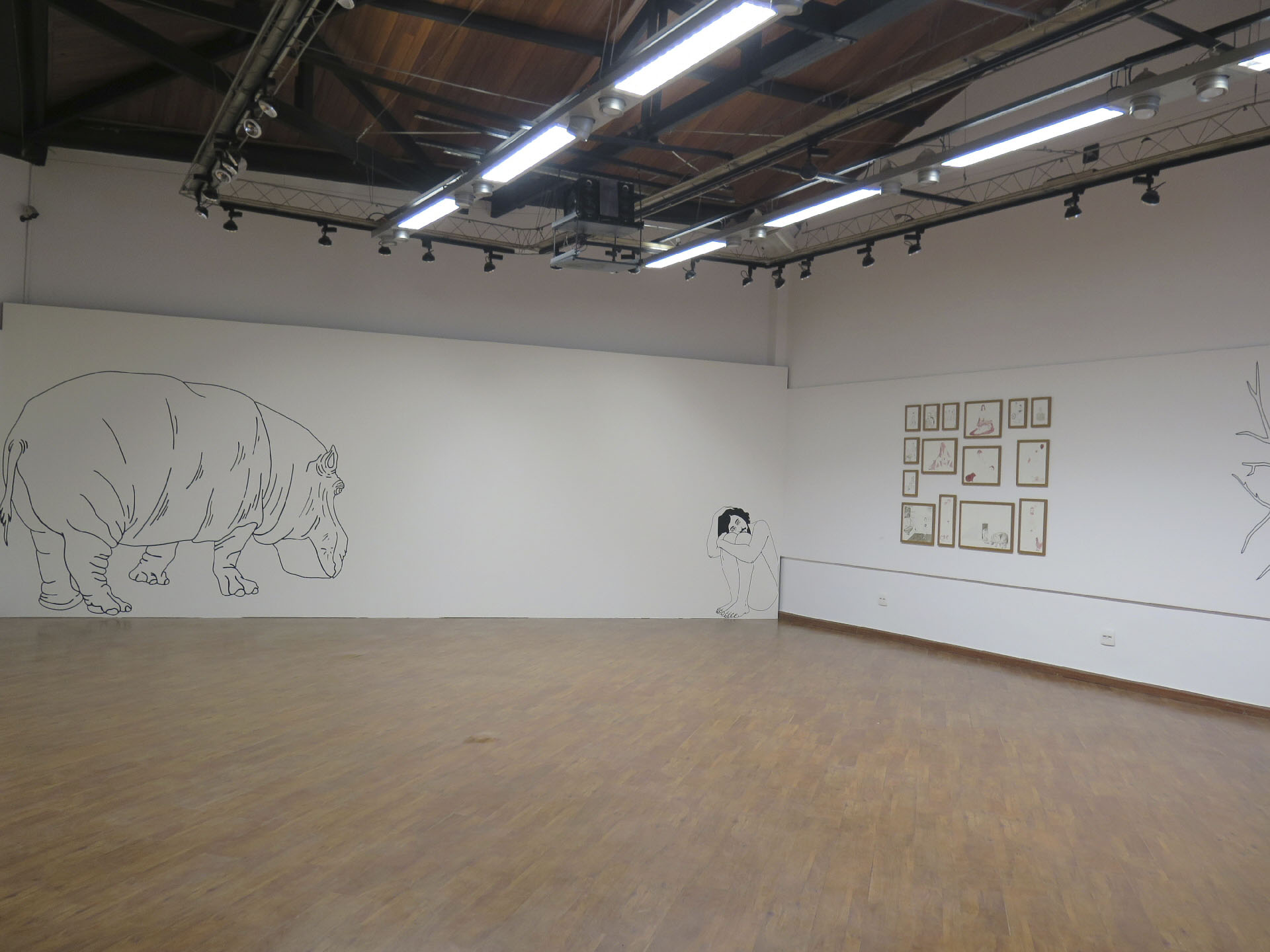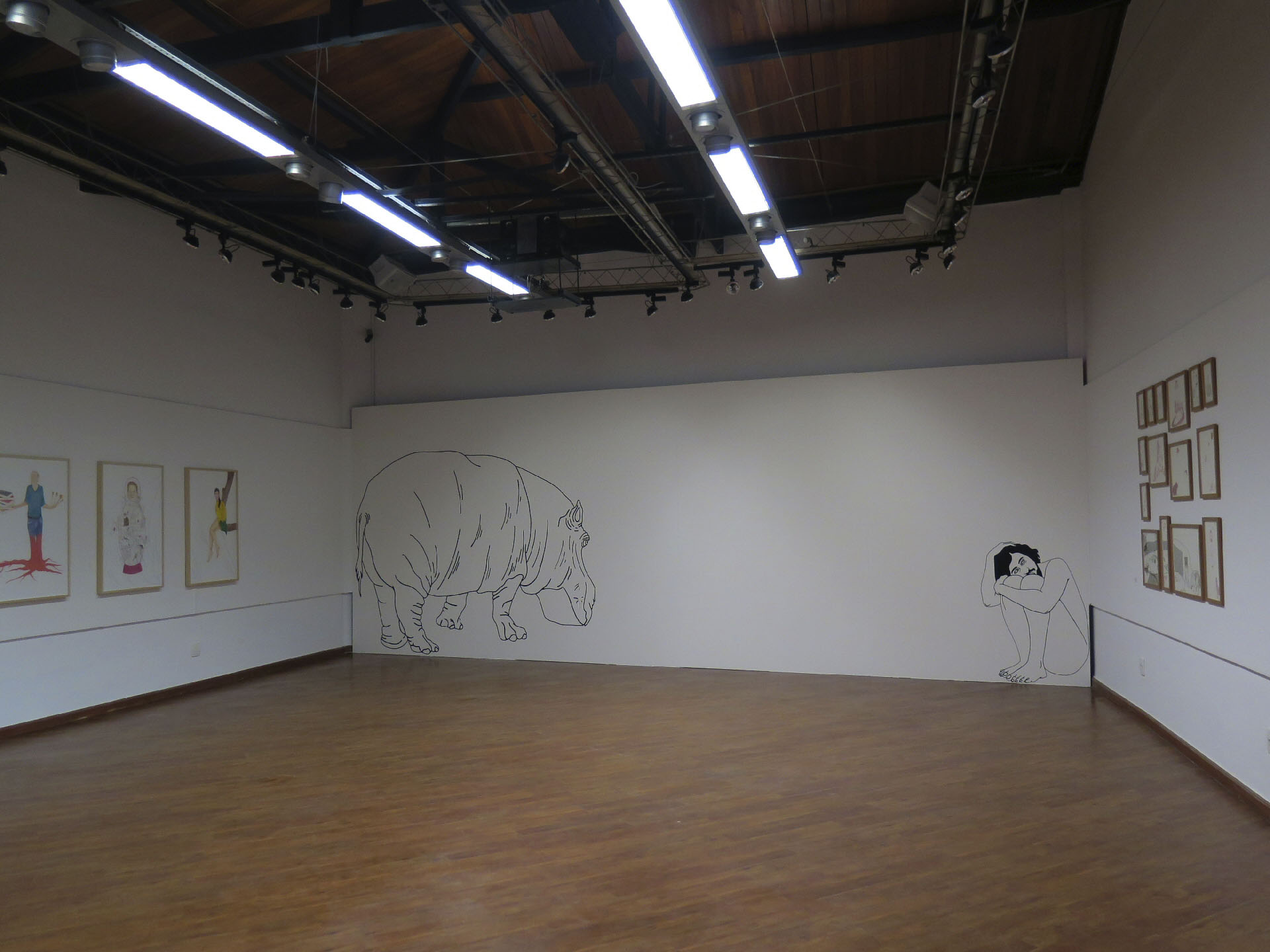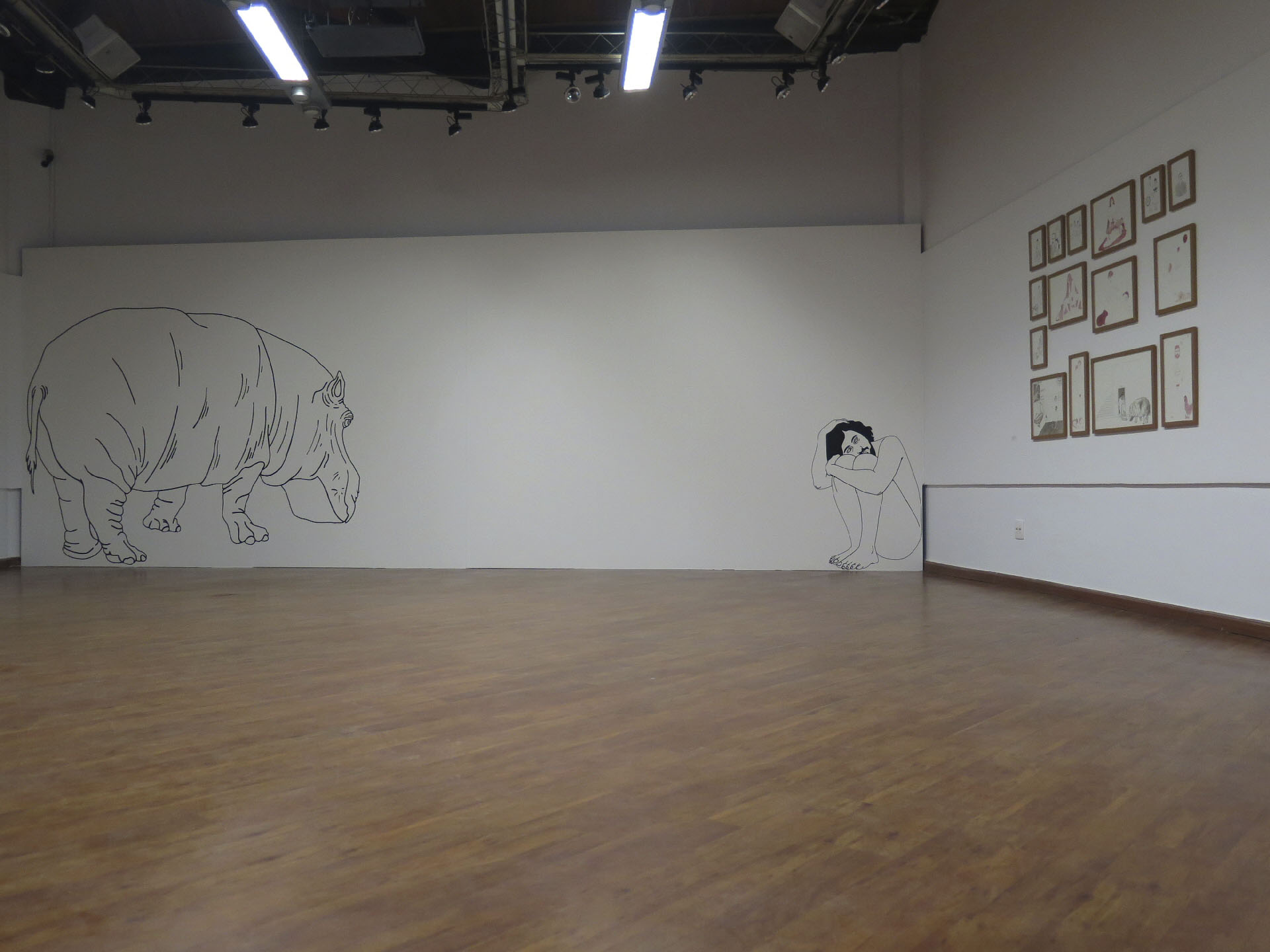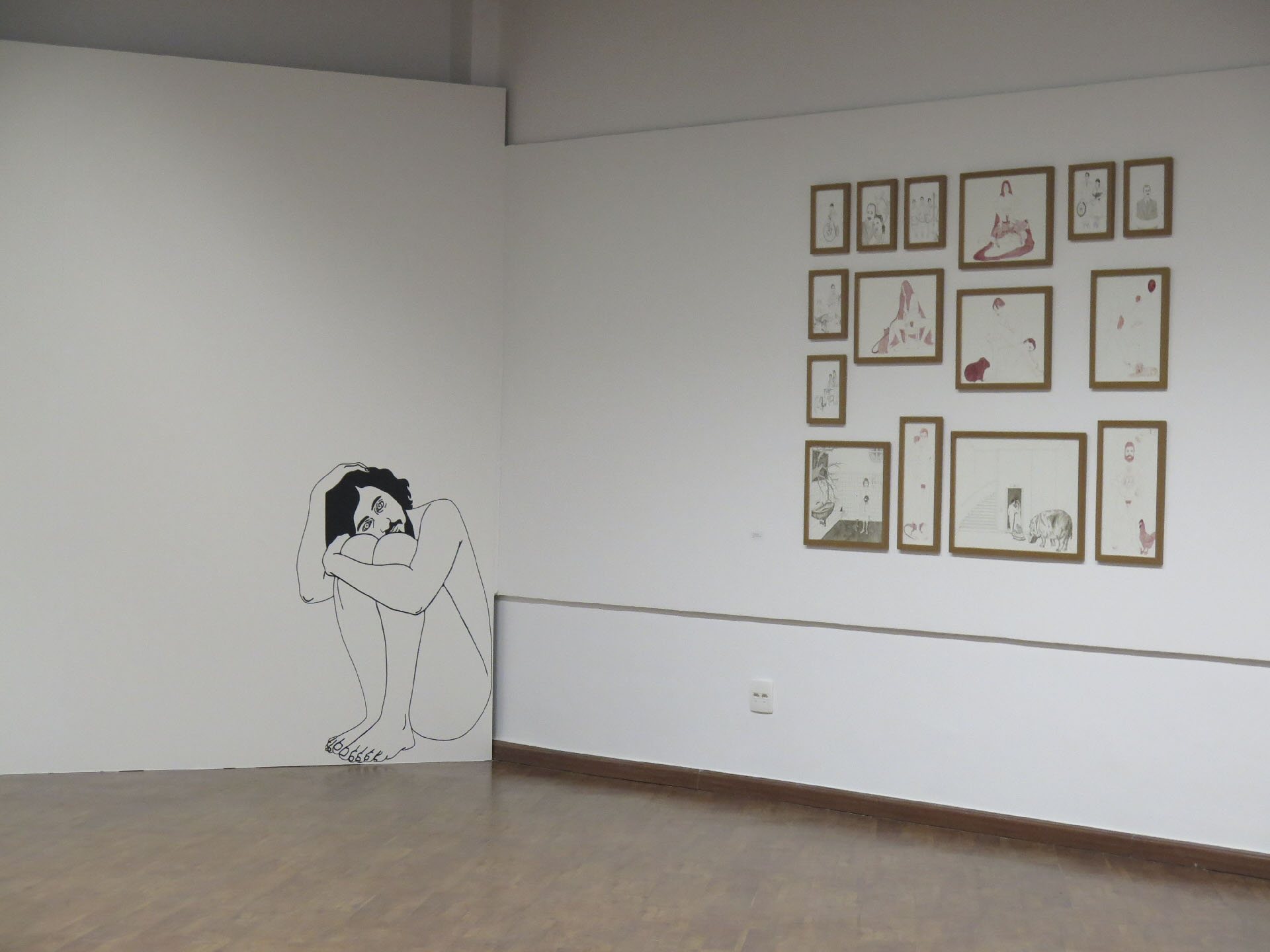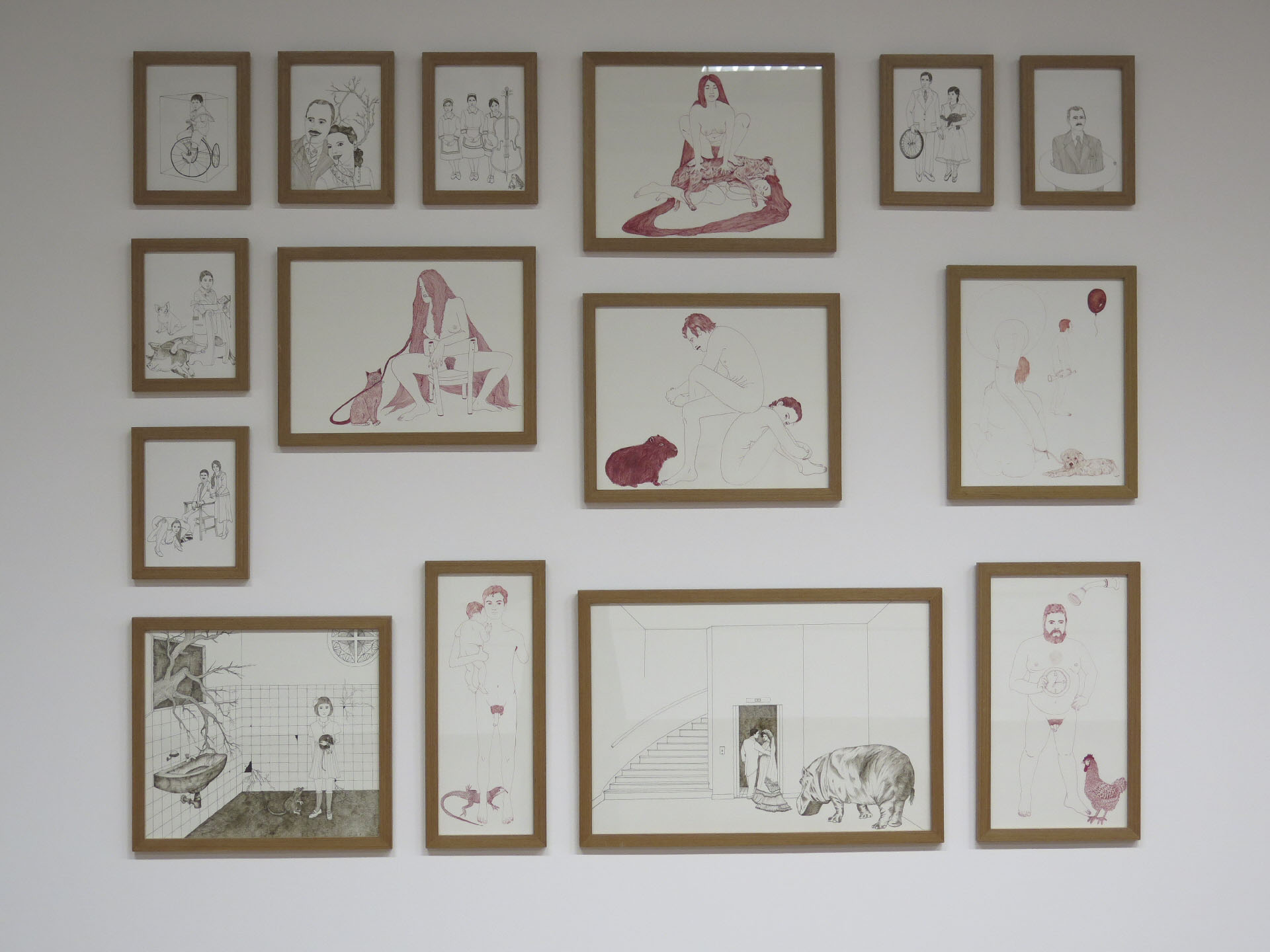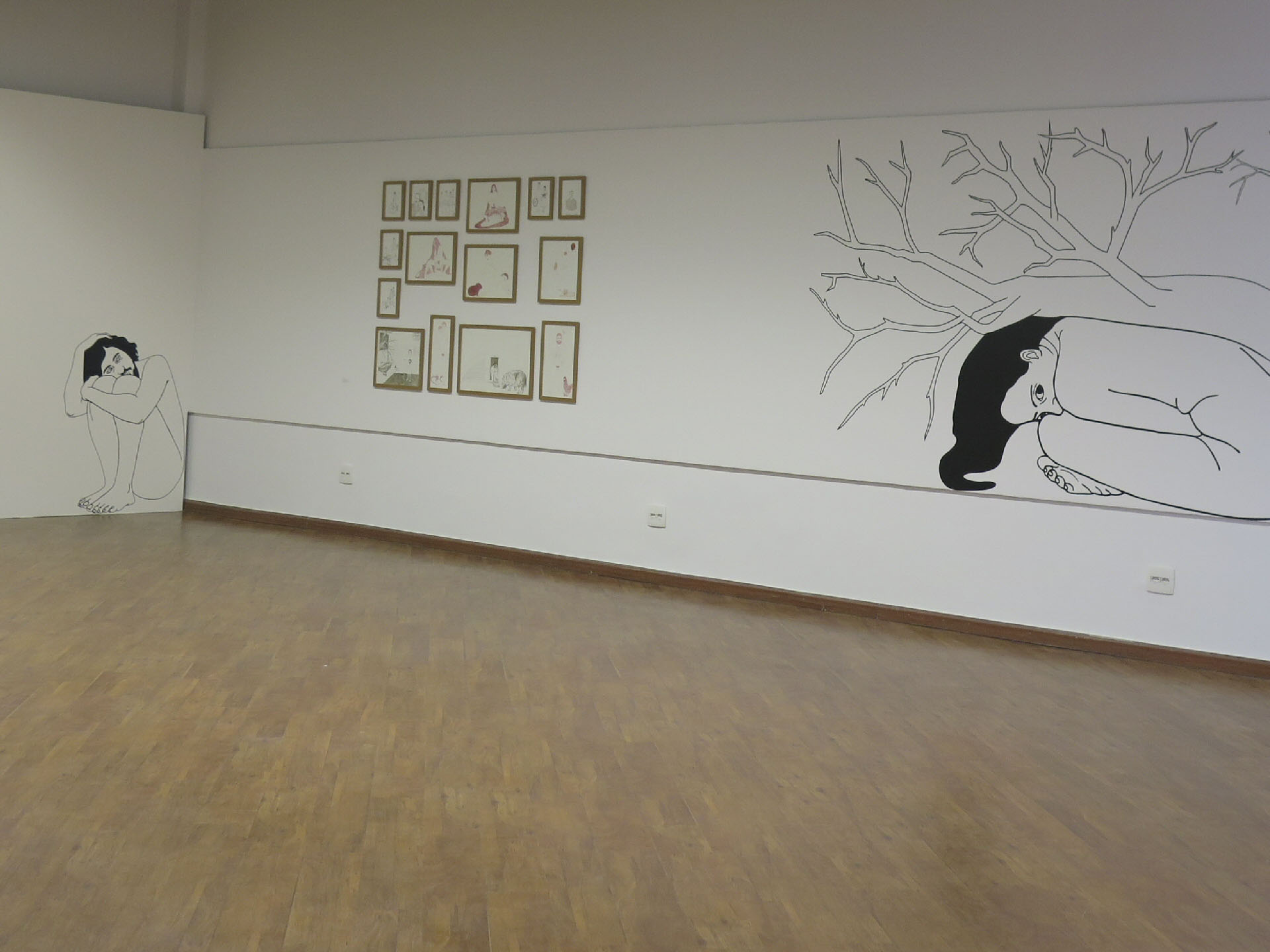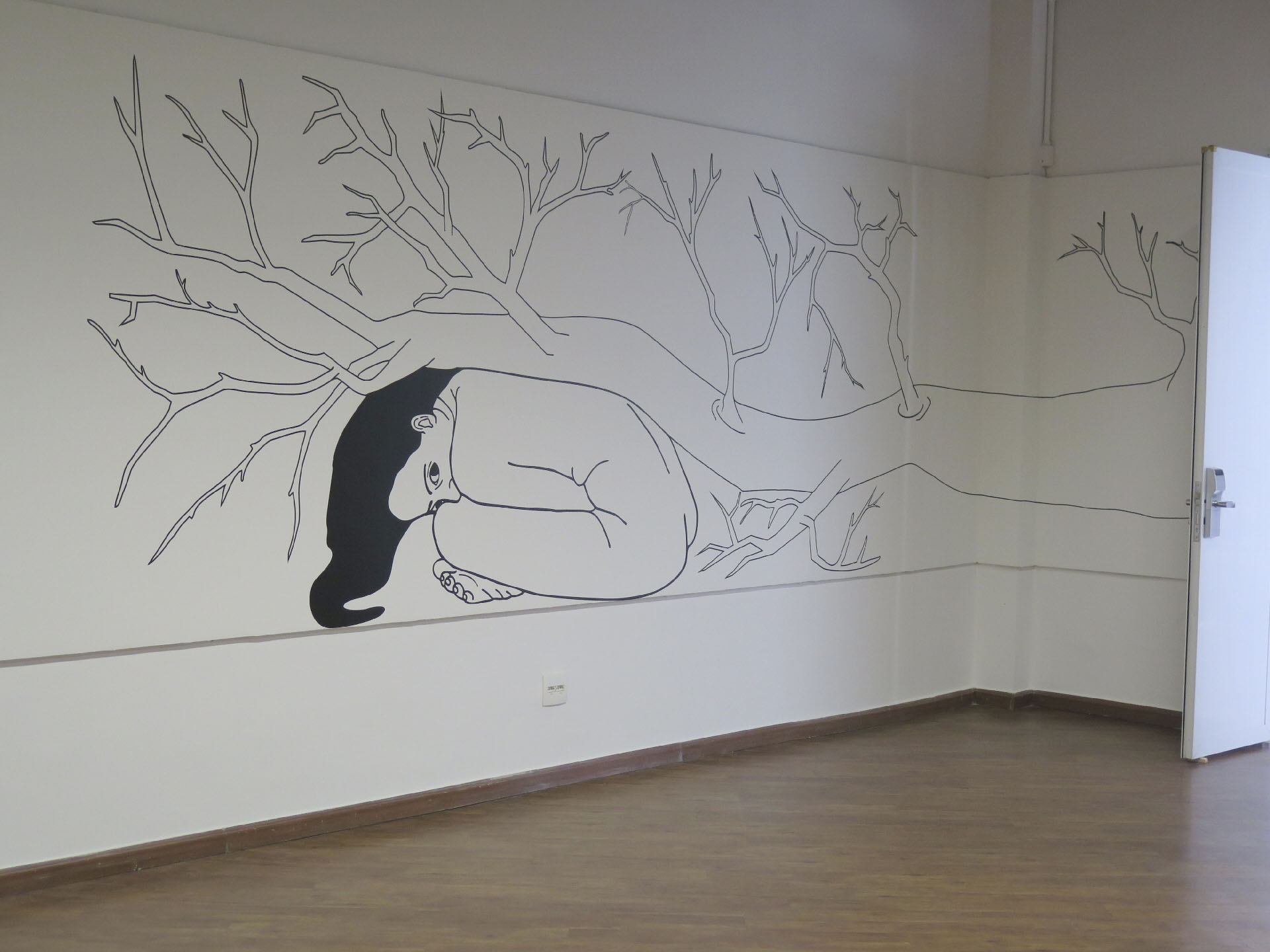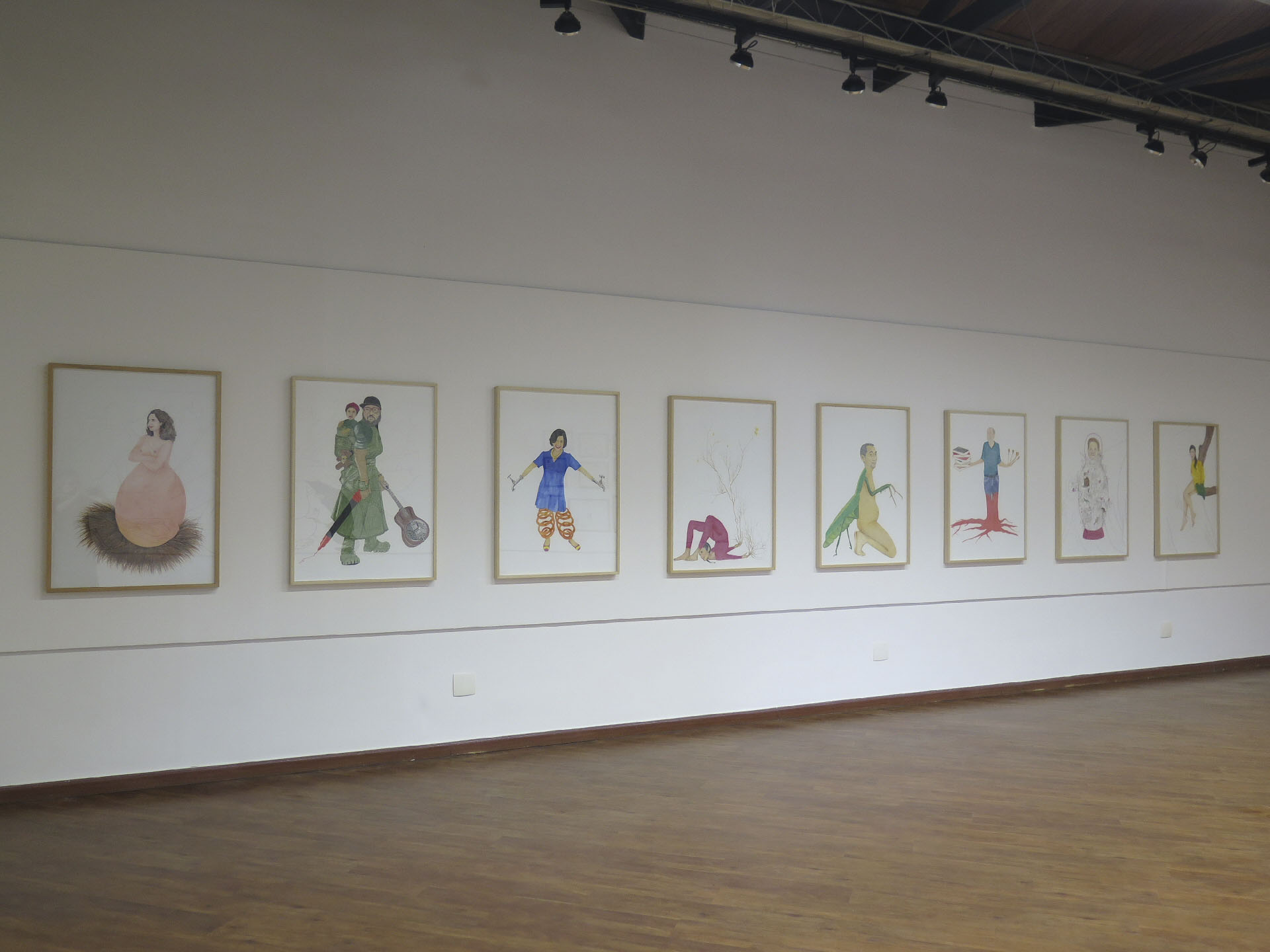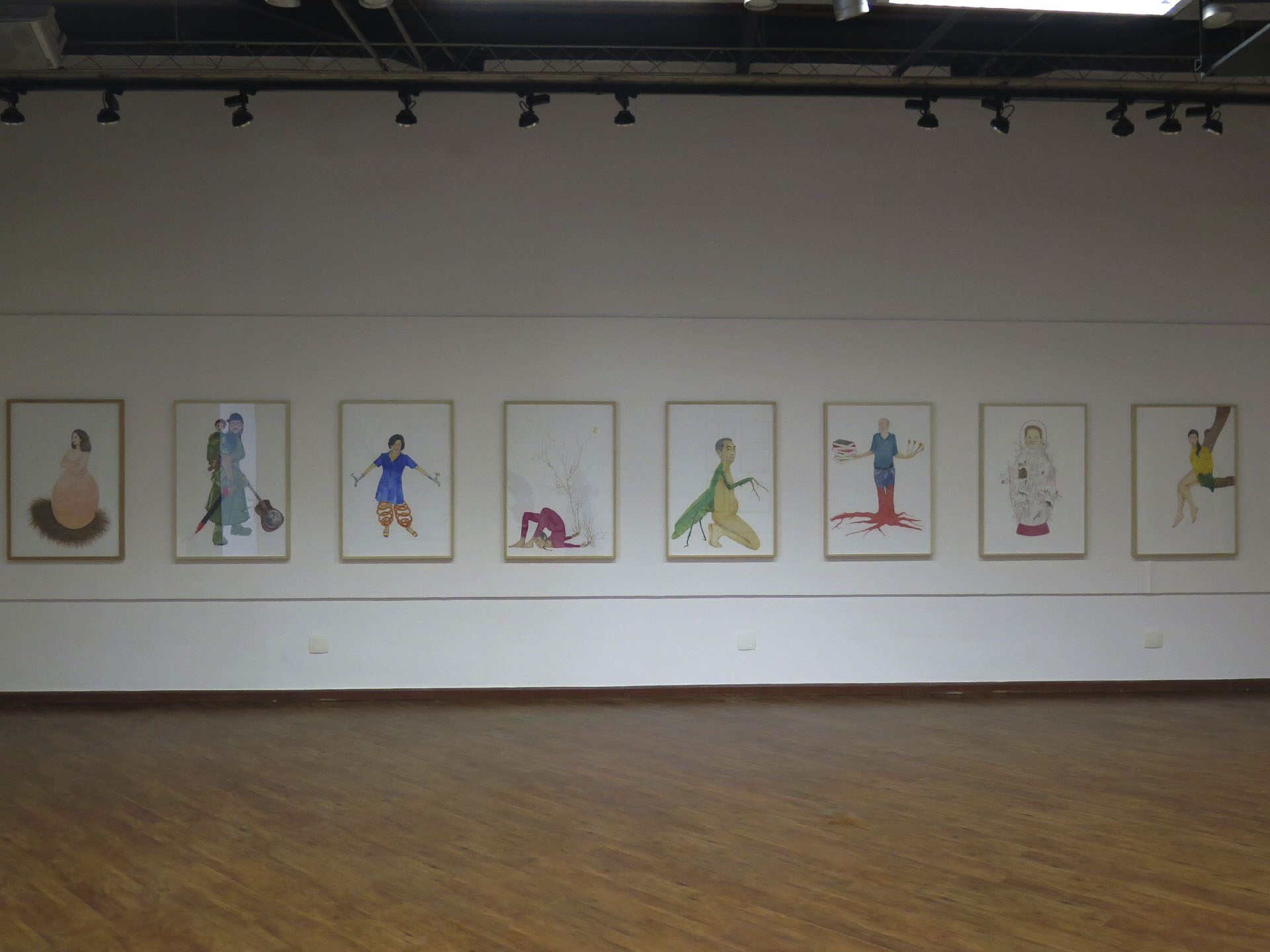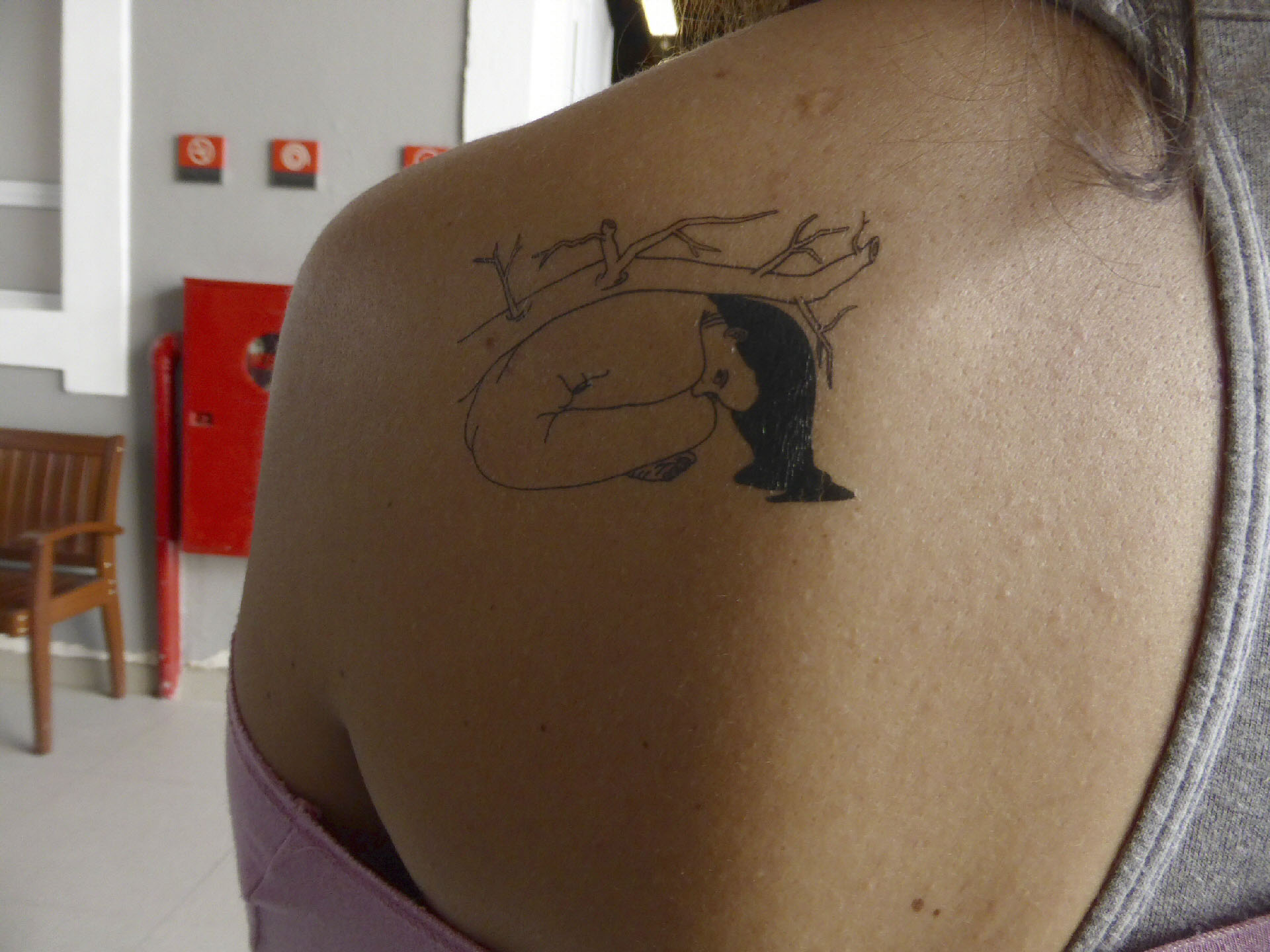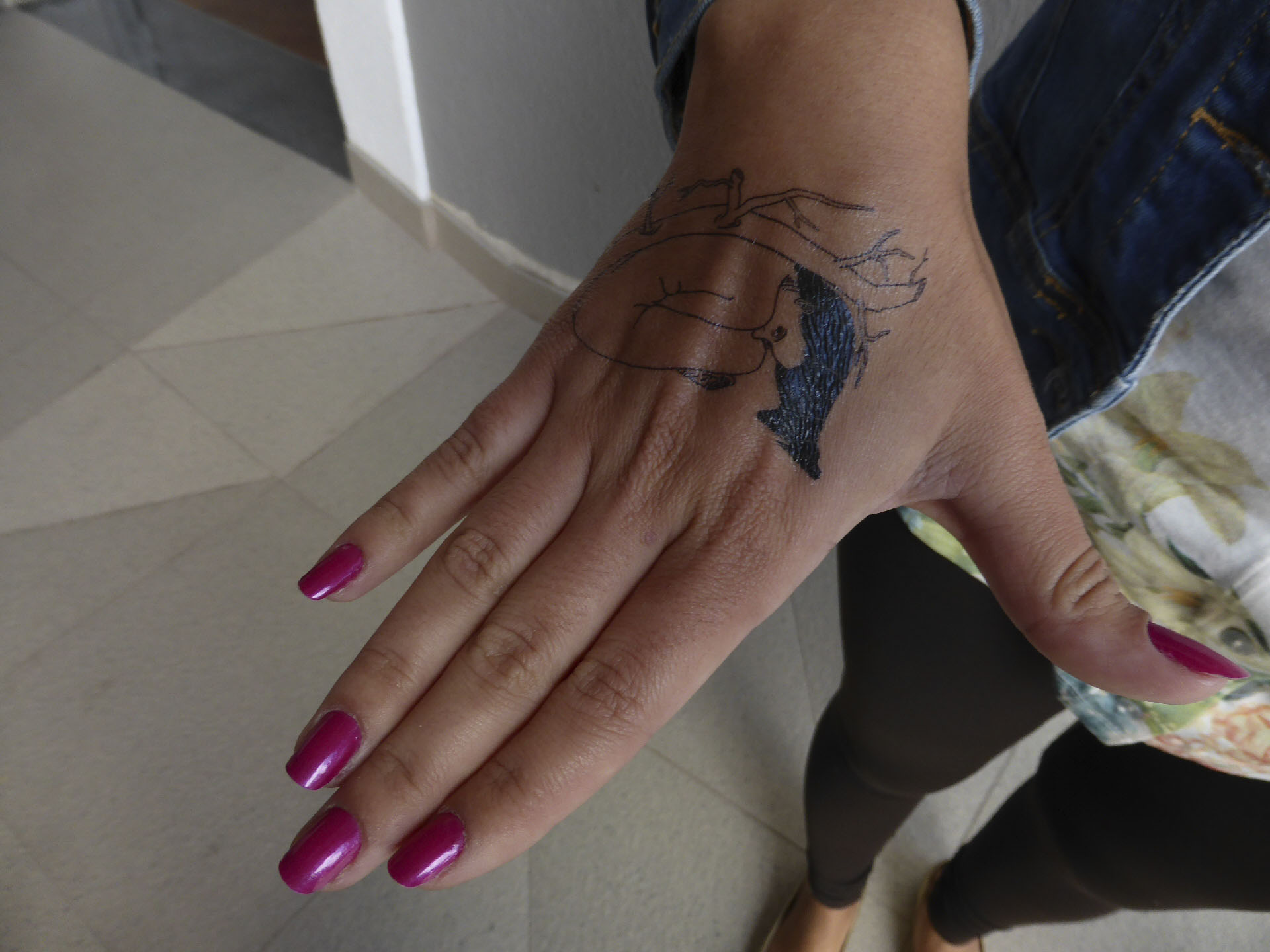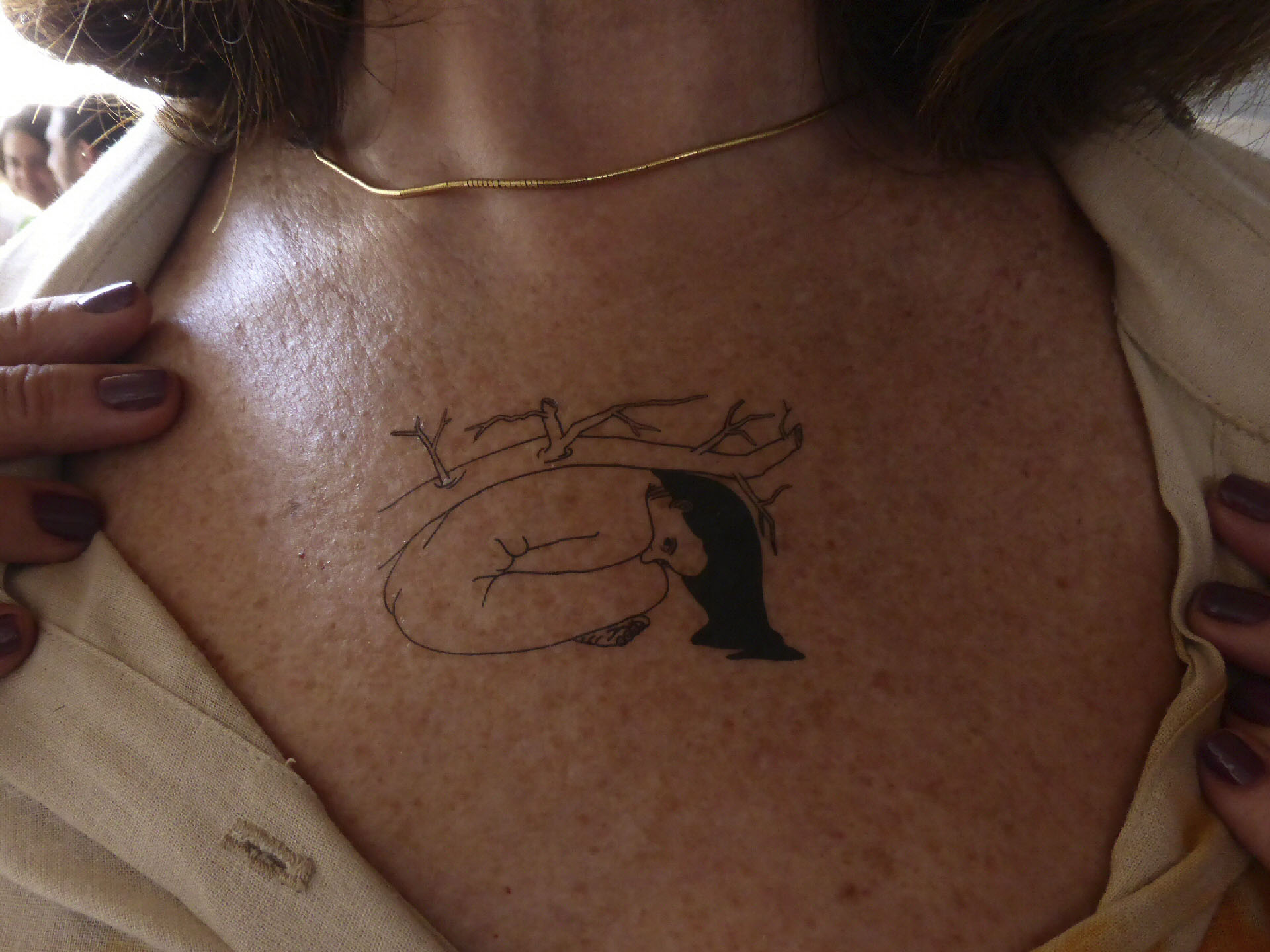Humano, demasiado humano | Human, All Too Human 2017
HUMANO, DEMASIADO HUMANO
Exposição individual na Galeria SENAC, em São Paulo
Curadoria de Sandra Tucci
Esta exposição traz para o espaço da Galeria SENAC duas séries de desenhos produzidas nos últimos cinco anos e três desenhos de grande formato adesivados diretamente no espaço expositivo. O tema da pesquisa, apresentado tanto nos desenhos pensados para o local quanto nas séries anteriores, é o ser humano em sua corporeidade – tanto a real quanto a inventada. A ideia da mostra é seduzir os visitantes a olhar, a olhar detalhadamente, a olhar curiosamente, a olhar através do desenho. Se os desenhos contam histórias, que elas possam ser lidas por olhos que inventam mais do que deduzem. Se os desenhos são comunicação, que eles comuniquem o desejo de quem os olha.
Da série De perto ninguém é normal, são apresentados 10 trabalhos em lápis de cor e aquarela sobre papel. Nessa série, em permanente processo, a artista elabora desenhos de seres humanos a partir de uma pesquisa que envolve a observação de suas características externas e internas. Tal pesquisa se dá por meio do contato direto da artista com as pessoas pesquisadas em sessões nas quais, além de conversas, são produzidas fotos e esboços dos entrevistados. O resultado são retratos híbridos de partes das pessoas observadas com partes de outros seres vivos ou objetos inanimados.
A serie Nós, os vivos, de 2010, é mostrada aqui na íntegra. São desenhos baseados em fotos antigas de famílias e na observação de modelos reais. Em todos eles, seres humanos encontram-se em situações não convencionais e mesmo absurdas.
Nas paredes expositivas, figuras em grande formato colocam o espectador em contato com uma realidade que é totalmente do universo do desenho. Ali, o branco do painel é também desenho, as linhas são ampliadas e vistas como se através de uma lente de aumento; o espaço planar do painel faz az vezes de um ambiente que abriga as figuras.
Durante a abertura da exposição, foram distribuídas tatuagens temporárias com um dos desenhos da mostra.
HUMAN, ALL TOO HUMAN
Solo Show at SENAC Gallery in São Paulo
Curated by Sandra Tucci
This exhibition shown at SENAC Gallery presents two series of drawings produced during the last five years and three large-format drawings directly applied to the walls of the room. The subject of the research, presented, either in the site-specific drawings and in the earlier series, discusses the human being in their corporeality – both real and invented. The idea of the show is to attract visitors to observe, to look in detail, to look curiously, to look through the drawing. If drawings tell stories, may they be read by eyes inventing, more than deducing. If drawings are communication, may they communicate the desire of who looks at them.
The show presents a group of 10 pieces made of crayon and watercolor on paper from the series Looking closely, nobody is normal. In this permanent work-in-progress series, the artist elaborates drawings of human beings based on a research that involves the observation of their external and internal characteristics. Such research is done through the direct contact with the people researched in sessions in which it is produced a series of photos and sketches of the interviewees, in addition to the conversations. The pieces result in hybrid depictions of parts of these people and parts of other living beings or inanimate objects.
The series We the living, produced in 2010, is shown here in its entirety. They are drawings based on old family photos and the observation of real models, in which human beings find themselves in unconventional and even absurd situations.
Adhered directly to the walls, large-format figures push the viewer to contact a reality that belongs completely to the universe of drawing. The white color of the panel becomes part of the drawing, the lines are enlarged and understood as through a magnifying glass; the planar space of the panel assumes the role of environment, housing the figures.
During the opening, temporary tattoos of one of the wall drawings were distributed to the public.
